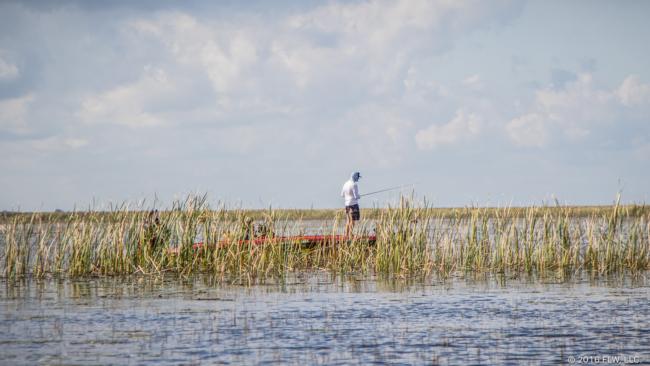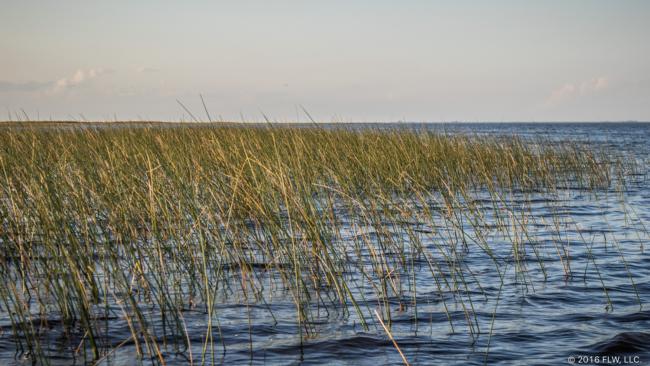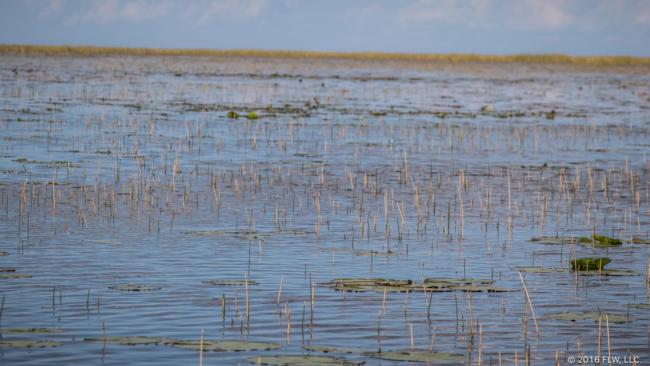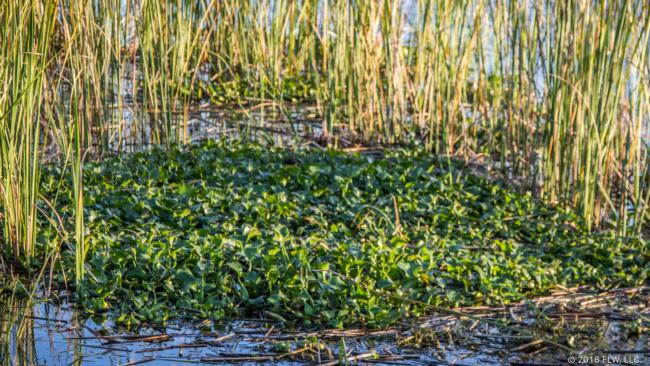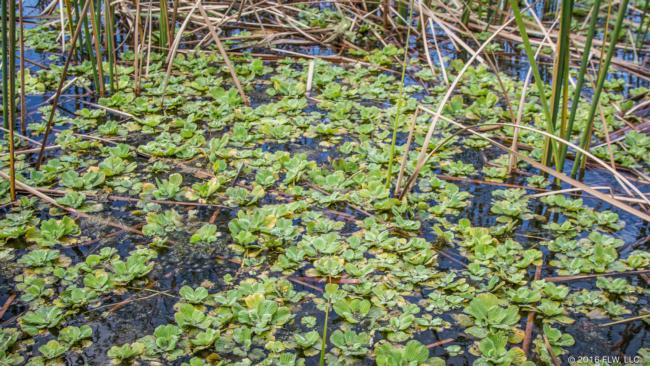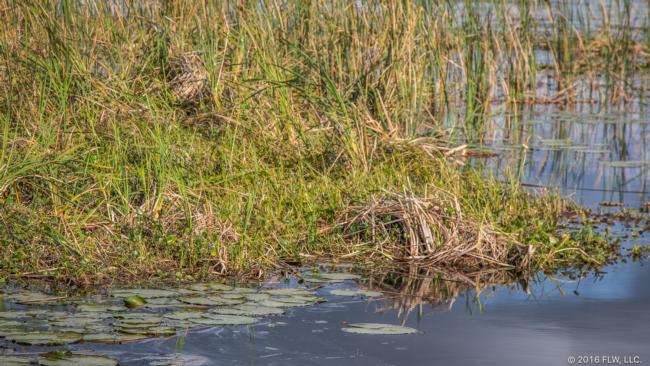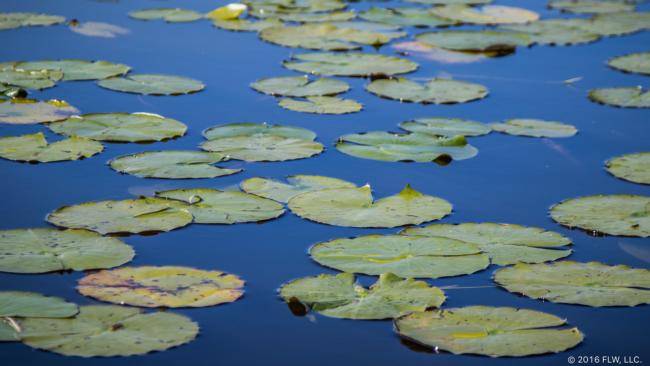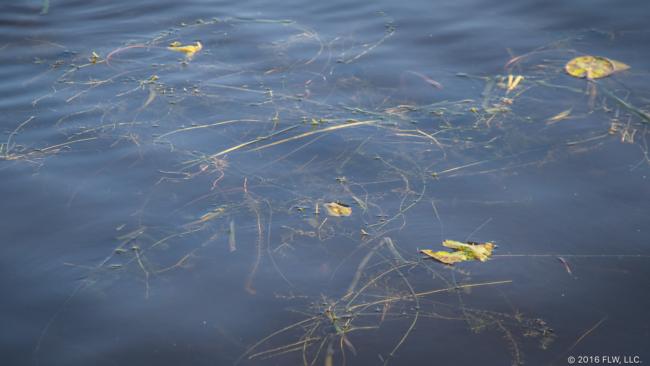Aquatic Plant ID
Get to know the aquatic vegetation that pros will be fishing on Okeechobee
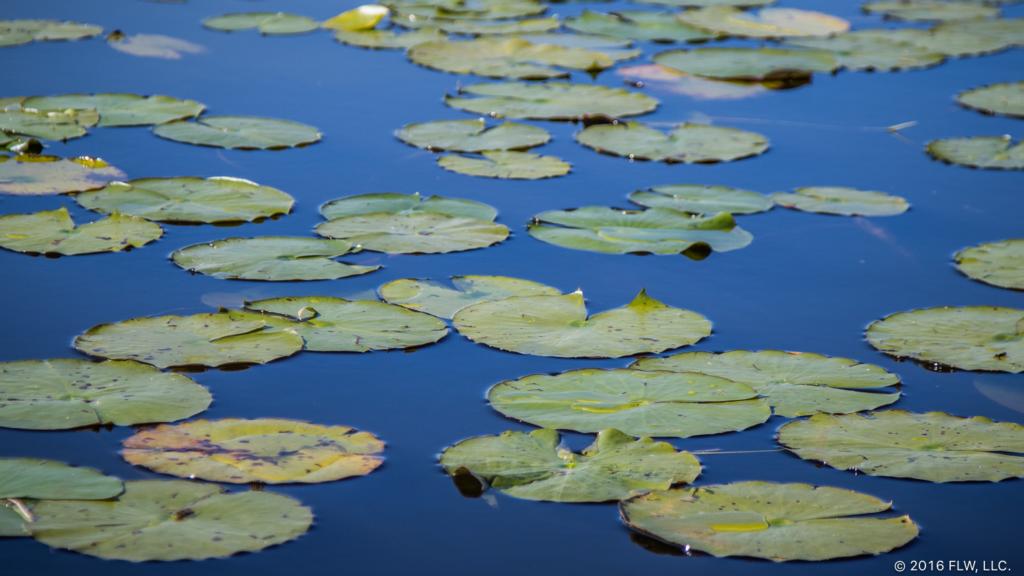
Lake Okeechobee is distinguished by its vastness, the big bass therein, and lots and lots of vegetation where the bass can hang out.
Val Osinski, the owner of Gambler Lures and winner of the 2015 Costa FLW Series event on the lake, knows as much about the Big O as anyone and is an expert on finding and targeting bass in its various grasses. When we had the opportunity to ride along with him for a tour of the lake and to learn to identify some of the grasses, it was a no-brainer to accept.
Perhaps the most common vegetation in Okeechobee is the plain old cattail, or bulrush. Often called “flat reeds” by locals, cattails form many of the outside reed lines that protect the backwaters. Within the backwaters, cattails in rough lines or clumps can be great places for bass to hang out prespawn. When the bass are actually spawning, they will often set up on or near single stalks of cattails in the midst of other vegetation.
Next up is the pencil reed, sometimes simply called “round reed” to distinguish it from the cattail. Pencil reeds often play the same role as cattails in that they’re interspersed throughout the inside edges of the lake and form the final frontier before open water. Pencil reeds can be particularly attractive to staging bass, and the double-weedguard Medlock Jig was designed specifically to deal with them.
Wiregrass, seen here with some pads interspersed, is extremely common in the south end of Okeechobee. It fills the backwater sections of the lake and forms big “hayfields.” Wiregrass is an essential piece of the puzzle on Okeechobee as it grows where there’s a hard bottom, and a hard bottom is attractive to spawning bass. During the right time, there are almost always fish spawning somewhere in the wiregrass.
Flipping floating mats is a time-honored Florida tradition, and Okeechobee has an abundance of them. Water hyacinth is the most well-known floating vegetation on the lake. Its dangling root system can provide excellent cover, especially when a cold front rolls through.
Similar to the hyacinth, water lettuce also has a dangling root system and floats on top. The main difference is that a water lettuce plant is a bit smaller than a full-grown hyacinth. It’s most often found locked in cattails or floating around hydrilla.
Mud mats aren’t strictly vegetation. They are actually sections of the bottom that have lifted off and floated away. They can be great harbors for bass in the winter, but they are usually nearly impenetrable. Here, you can see pennywort (the stalks with the green, circular leaves on top) along the edges of the mat. A mud mat with a good surrounding mat of pennywort or hyacinths can be killer if you can find it.
Lily pads are common all over the country, but they are plentiful and important on Okeechobee. Though fish usually don’t frequent the thickest pad fields, the sparser ones often hold bass that are setting up on the hard roots of the pads to spawn.
Hydrilla is another well-known and essential grass. It is especially common on the north side of the lake and does a great job of filtering water and holding prespawn bass. A ChatterBait worked over and around hydrilla has accounted for some of the biggest catches in Okeechobee history.
